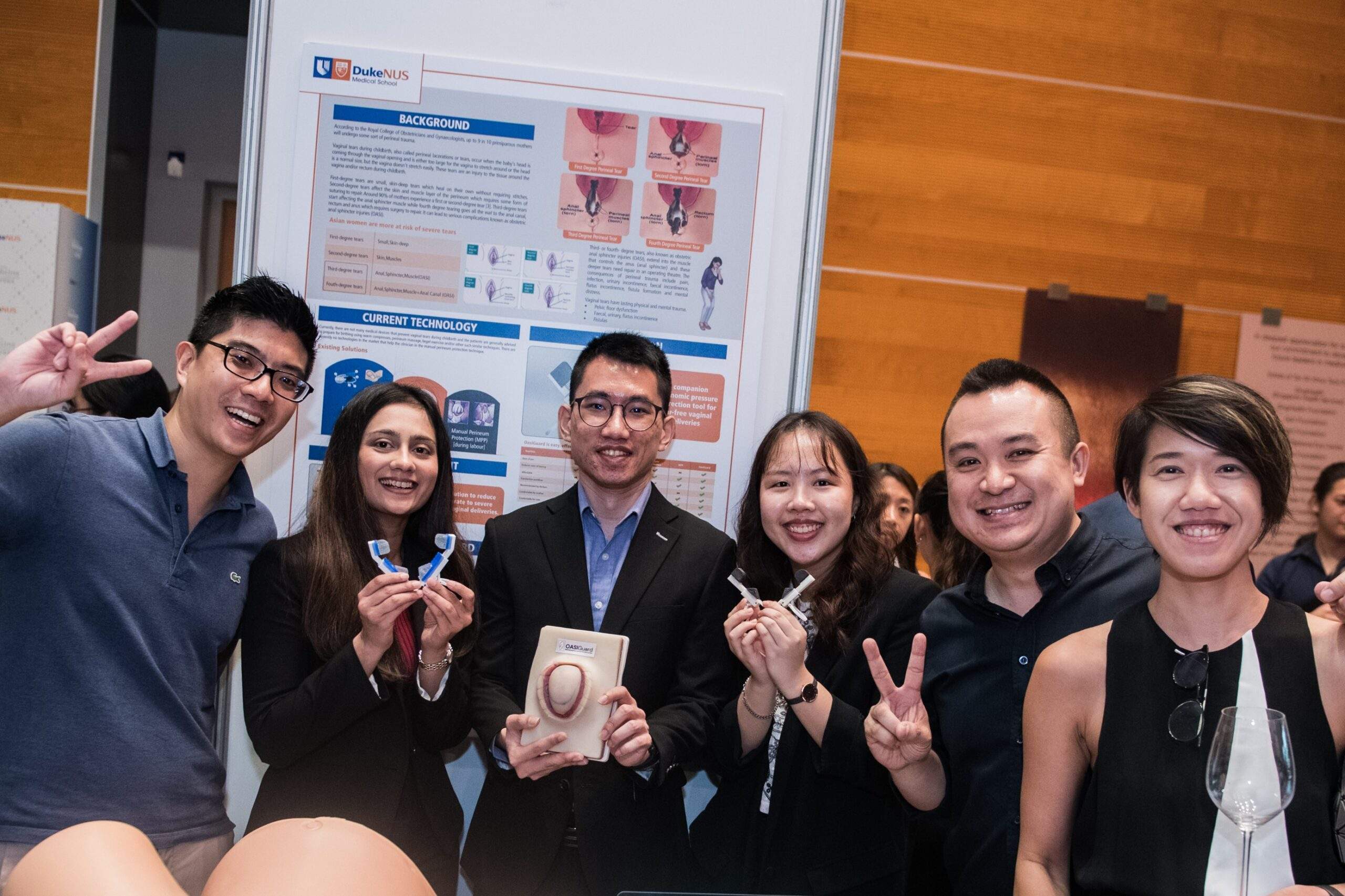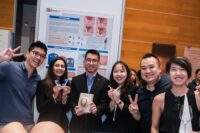
26 Apr Duke-NUS Innovator Team Develops Tool to Reduce Vaginal Tears During Childbirth
MedicalResearch.com Interview with:

Team FemTech
TEAM FEMTECH
Feng Yi Low, MD student (Class of 2024), Duke-NUS Medical School
Casey Ang Fann Ting, Biomedical Engineering student, College of Design and Engineering, National University of Singapore (NUS)
Anar Sanjaykumar Kothary, MBA student, NUS Business School
MedicalResearch.com: What is the background for this innovation? What is the problem you sought to mitigate?
Response: A safe and low cost solution to reduce the incidence of moderate to severe vaginal tears during childbirth. Vaginal tears are a serious complication during delivery. 90% of women will experience it during childbirth. It is even more prominent in the Asian context as Asian women are 74% more likely to experience tearing due to various factors such as their skin composition as well as stature to name a few.
MedicalResearch.com: Could you tell us more about Duke-NUS’ Health Innovator Programme?
Response: The Duke NUS Health Innovator Programme (DHIP) is a nine month, first of its kind programme in Singapore that assembles a multidisciplinary team of aspiring innovators from medical, engineering or business backgrounds. The teams use a needs-based approach to identify and work on a critical unmet clinical need, while being closely mentored by industry & clinical mentors.
Our team in particular was mentored by Dr. Kevin Koh (CEO) and Mr. Richard Lieu (Head of Technology) from Vivo Surgical, and Dr. Ee Tat Xin (Consultant, Obstetrics & Gynaecology) from KK Women’s and Children’s Hospital
The inaugural run of DHIP was anchored on the theme of Women’s Health. Each team was comprised of a third year Duke-NUS medical student, a final year biomedical engineering student from the NUS College of Design and Engineering, as well as an MBA student, from NUS Business School.
MedicalResearch.com: Would you describe the device? Can it be made readily available at an affordable price? Is there a steep learning curve?
Response: OASIGuard is an ergonomic pressure redirection tool for use by physicians, midwives and/or birthing assistants. The device requires little to no training, and should not involve a steep learning curve as it only aims to make current practice better. The device of OASIGuard has been inspired by the principles of the Manual Perineum Protection (MPP) guarding technique – just that OASIGuard takes this one step further by allowing for multi-directional pressure redirection in one movement, which is currently not possible due to the manual nature of MPP and limitations of the human hands. Essentially, by redirecting pressure away from the most vulnerable regions of the perineum OASIGuard aims to reduce the prevalence of all vaginal tears and especially those that are moderate to severe.
OASIGuard is a cost-effective device and we envision that it can be made readily available at an affordable price with scale – OASIGuard provides unparalleled value and with birthing being evergreen, we believe we have a compelling case to enable adoption.
MedicalResearch.com: What are your next steps in development, manufacture or distribution?
Response: Our next steps include further user testing and development before we head towards small batch manufacturing and clinical studies in 2025.
MedicalResearch.com: Is there anything else you would like to add? Any disclosures?
Response: We have currently filed a provisional patent and are looking to connect with key opinion leaders in the women’s health / OBGYN space – should anyone be keen, please do not hesitate to reach out.
Citation: Research presented by:
Duke-NUS Health Innovator Programme (DHIP):
https://www.duke-nus.edu.sg/about/media/media-releases/dhip-dazzle-day-2023
The information on MedicalResearch.com is provided for educational purposes only, and is in no way intended to diagnose, cure, or treat any medical or other condition. Always seek the advice of your physician or other qualified health and ask your doctor any questions you may have regarding a medical condition. In addition to all other limitations and disclaimers in this agreement, service provider and its third party providers disclaim any liability or loss in connection with the content provided on this website.
